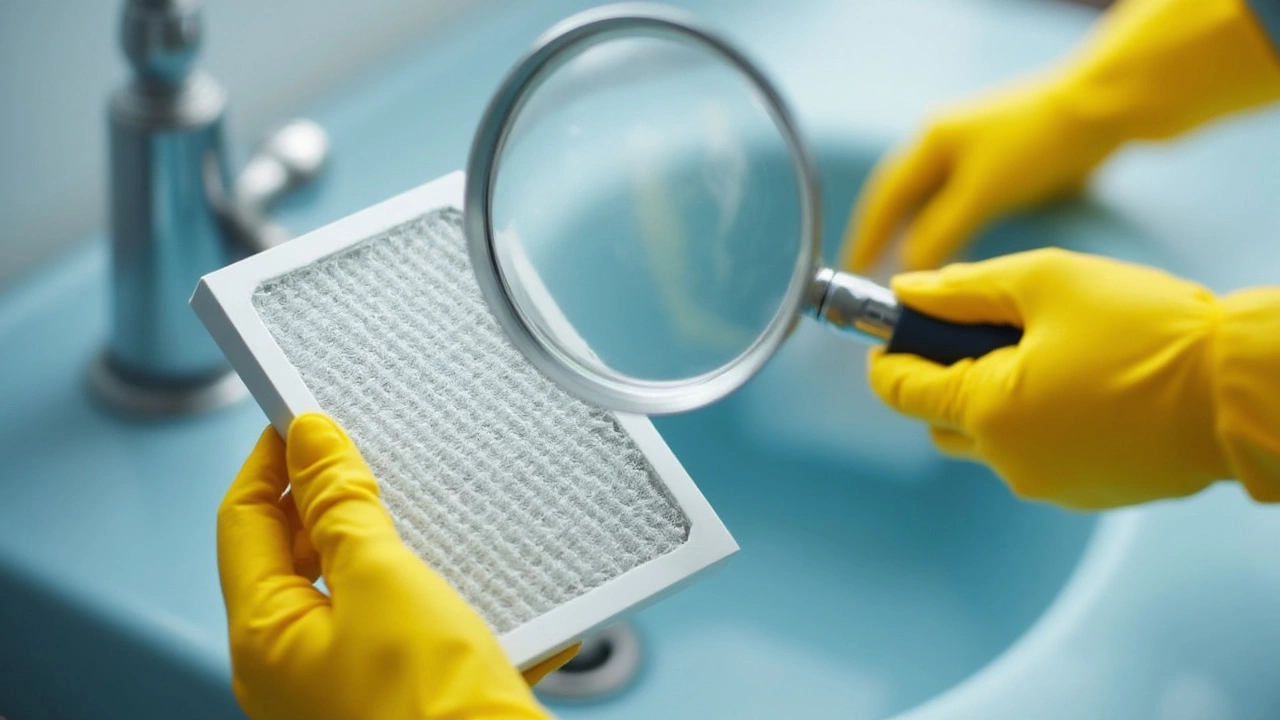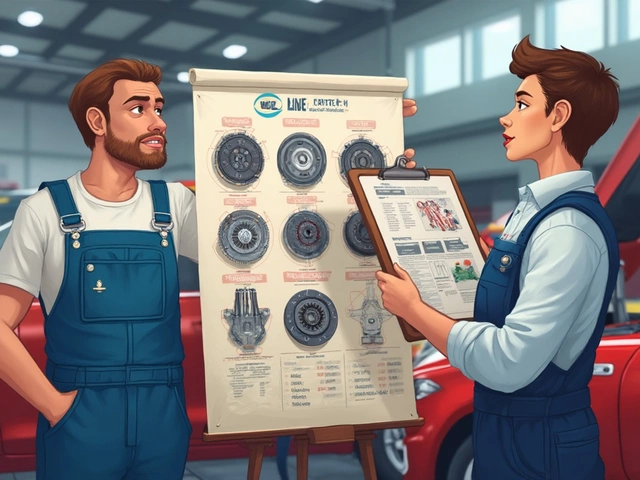Standing in the hardware aisle, it's pretty tempting: a washable air filter that claims to be good for years, slashing waste and saving you money. On the back, you see promises of "eco-friendly" this and "no more replacements" that. But do these reusable filters actually do their job—or do they just move dust around?
Before you swap out your throwaway filter for a washable one, it's smart to know what you’re really getting into. It’s not just about saving a few bucks or feeling green. You’ve got to think about how well they trap dust and pollen, how easy it is to clean them (spoiler: it's not as quick as shaking them out over the trash), and if they're the right fit for your home’s air quality needs. If you have pets like my cat Luna or allergies, the details matter even more.
This isn’t one of those "one-size-fits-all" situations. Washable filters aren’t magic—they’re a trade-off. Let’s break down the real-life pros and cons, so you don’t end up with regret clogging up your vents and your wallet.
- How Washable Air Filters Work
- Cost and Environmental Impact
- Cleaning: Simple or a Hassle?
- Performance Compared to Disposable Filters
- Making Your Choice: Who Should Buy Them?
How Washable Air Filters Work
So, what’s actually going on inside a washable air filter? Instead of paper or fiberglass like disposables, these reusable filters usually use a plastic or metal frame with a mesh of synthetic fibers or expanded metal. As air runs through your HVAC system, dust, hair, pollen, and debris get caught in that mesh. The big sell here is that instead of tossing the filter every couple of months, you just wash out the junk and stick the filter back in.
The tech behind these filters isn’t exactly rocket science. Most washable filters rely on just physical barriers—not fancy coatings or extra chemicals. Because they’re usually rated around MERV 1-8 (that’s the Minimum Efficiency Reporting Value), they tend to snag big stuff like dust bunnies, visible pet hair, and larger pollen bits. High-end disposable filters often grab much tinier particles (think pet dander or vape smoke) that slip right through a standard washable filter.
- Reusable filters work by trapping bigger particles, letting smaller allergens pass through more than a high-MERV disposable filter would.
- They’re built with layers you can rinse clean—no need to buy a whole new filter each time.
- Some models add a tacky coating to boost particle capture, but you’ll need to reapply these sprays after a certain number of washes.
- Most are sized to fit standard HVAC units, so swapping isn’t hard if you grab the right dimensions.
One thing a lot of manufacturers skip over: washable filters lose efficiency if you don’t clean them frequently. Dirty mesh = restricted airflow. And if you forget to wash it? Your system can end up working harder, driving up energy bills. Scientists with the American Society of Heating, Refrigerating and Air-Conditioning Engineers (ASHRAE) say airflow drops can happen with clogged filters of any kind, but reusable types make you totally responsible for timing cleanings.
Quick takeaway: Washable air filters do a solid job with big dust and visible debris, but they aren't miracle workers for serious allergy issues. If you want to filter out super fine pollutants, a disposable, higher-rated filter probably does better—at least on the particle-catching front.
Cost and Environmental Impact
The sticker price on a washable air filter usually makes people pause—I mean, they’re anywhere from $25 to $60 each, which is a good bit more than your typical $5–$10 disposable filter. Here’s where it gets interesting: while that upfront cost is higher, a decent reusable filter can last three to five years with regular cleaning. So if you replace a basic disposable filter every three months, you’ll go through about four a year. That’s $20 to $40 each year—just for one vent. Multiply by the number of filters in your system, and you see how the numbers add up fast.
When it comes to the environment, it feels good not chucking another filter in the trash every few months. Landfills are packed with used filters made of plastic, cardboard, and synthetic fibers that don’t break down easily. It’s estimated that U.S. homes toss over 20 million disposable filters every month. Most of those end up in landfills, adding to the plastic problem.
But washable filters aren’t totally impact-free. You’ll use water and (sometimes) a mild cleaner every time you hose them off. Over a few years, that’s a chunk of water and a little soap entering the environment, but it’s nothing like the mountains of trash you’d create with single-use filters.
| Type | Average Cost Per Year | Filters Sent to Landfill per Year (per household) |
|---|---|---|
| Disposable Filter | $20–$40 | 4+ |
| Washable Filter | $8–$20 (spread over lifespan) | 0 |
Bottom line: if you stick with your reusable filter and clean it regularly, you’ll save money over time and keep a fair bit of waste out of the dump. Just know you’re trading trips to the store for some time spent at the sink or in your backyard with a hose.

Cleaning: Simple or a Hassle?
If you’re picturing a washable air filter as something you just rinse under the tap and pop back in, you’re in for a surprise. While they save on trash and repeat spending, reusable filters come with regular cleaning chores that you can’t just skip—otherwise, your air quality takes a hit and your HVAC unit works harder.
Here’s the thing: Most washable air filters need a real rinse every 1 to 3 months, even more often if you have pets, allergies, or live somewhere super dusty. Unlike tossing out a disposable, these filters call for time and some elbow grease.
- First, you have to turn off your HVAC—you don’t want to suck junk into your system while the filter’s out.
- Next, take the filter outside. Otherwise, you risk spraying dust back into your home. A garden hose works best; don’t bother with just a sink.
- For stubborn buildup, a mild detergent and a soft brush help (don’t use anything harsh or you could wreck the filter's mesh).
- Let it dry completely. No skimping here. A damp filter can cause mold or mildew in your ducts. Depending on your climate, drying can take a few hours to overnight.
One thing people don’t always mention: This cleaning process is non-negotiable. A clogged filter is just as bad—sometimes worse—than using none at all. Forgetting to clean it can drop your HVAC efficiency and potentially shorten its life. According to a 2023 study from the Home Ventilation Council, a dirty filter can reduce HVAC efficiency by up to 15%.
| Cleaning Step | Estimated Time Needed |
|---|---|
| Remove and inspect filter | 5 minutes |
| Thorough rinse/scrub | 10-15 minutes |
| Dry fully | 2-8 hours |
| Reinstall | 2 minutes |
If that sounds like more work than you’re willing to handle every few weeks, a reusable filter could just add another headache to your list. But if you’re up for the cleaning routine, it can work out—just don’t expect it to be as effortless as the marketing makes it sound.
Performance Compared to Disposable Filters
Let’s get straight to it: washable air filters just don’t trap as much fine dust, pollen, and pet dander as the better disposable filters do. Most reusable filters have a MERV rating (that’s the industry measure for filtration) between 1 and 8. Meanwhile, throwaway pleated filters can hit MERV 11, 13, or even higher. In regular language? If you’ve got allergies or pets, those pricier disposables will actually catch way more of the tiny stuff floating around.
Look at it this way—washable filters are great for catching bigger debris so your HVAC doesn’t clog up, but they tend to let the microscopic stuff slide through. That means pollen, smoke residue, even some bacteria can pass right back into your rooms. Ever notice extra dust on your TV or have to sweep more often after switching to a reusable filter? That’s why.
Here’s a quick breakdown to make it easier:
| Filter Type | Common MERV Range | Best For |
|---|---|---|
| Washable/Reusable | 1-8 | Dust, lint, larger particles |
| Disposable Pleated | 8-13+ | Allergens, fine dust, smoke |
And about airflow—it’s true that reusable filters usually allow more air through your HVAC system. That might mean your system runs a bit more efficiently in some cases. But don’t get too excited: you’re trading off cleaner air for easier airflow. If you want both, the high-end disposable filters that are marked "low airflow restriction" are probably your best bet.
So, here’s the bottom line: if you only care about the basics—like protecting your heating and cooling system—washable filters do fine. But if you want to trap pet dander (Luna’s hair included), pollen, or smoke particles, strong reusable filters just can’t match what the top disposable filters actually filter out. The difference can be night and day, especially if someone at home is sensitive to allergens.

Making Your Choice: Who Should Buy Them?
So, who really benefits from washable air filters? It mostly comes down to your home environment, habits, and what you want from your HVAC system. These filters can make sense for some folks, but not everyone will love them.
- Budget-minded homeowners: If you hate dropping $10-$20 every couple months on a disposable filter, then a washable air filter might pay off. Even with a higher upfront price (usually $40-$90), one can last several years if you clean it consistently.
- Eco-conscious families: You avoid tossing a pile of filters in the trash every year. One government estimate puts annual filter waste at over 175 million units in the U.S. alone. Reusable filters help cut landfill trash.
- Tech-savvy renters and homeowners: If you’re handy and don’t mind disassembling the grille and hosing down a filter every month or two, you might actually keep up with the cleaning routine. It’s a small project, not a magic fix.
- Homes without high allergy concerns: Many washable air filters are rated MERV 6 to 8 (they’ll catch household dust and lint but aren’t great at snagging pollen, pet dander, or smoke). People with allergies, pets, or smoke in the home often get better results with a higher-rated disposable filter—think MERV 11 or 13.
If you’re all about convenience or you deal with serious allergies, these filters might frustrate you. They need regular cleanings (like, rinse-and-dry every 30-60 days), or airflow drops and dust sneaks by. Ever tried drying a filter with a hairdryer because you forgot to get it done before bedtime? Not fun. Miss a cleaning, and you could strain your HVAC system or see dust floating around again.
| Washable Filter Type | MERV Rating | Filter Lifespan |
|---|---|---|
| Standard Reusable | 6-8 | Up to 5 years |
| Premium Electrostatic | 8-10 | 4-6 years |
In short, if you’re pretty disciplined, don’t need hospital-grade air, and want to shrink your footprint (and maybe your filter budget), washable air filters are worth a look. But go in knowing they’re not set-it-and-forget-it—and they’re not for people allergic to chores.




